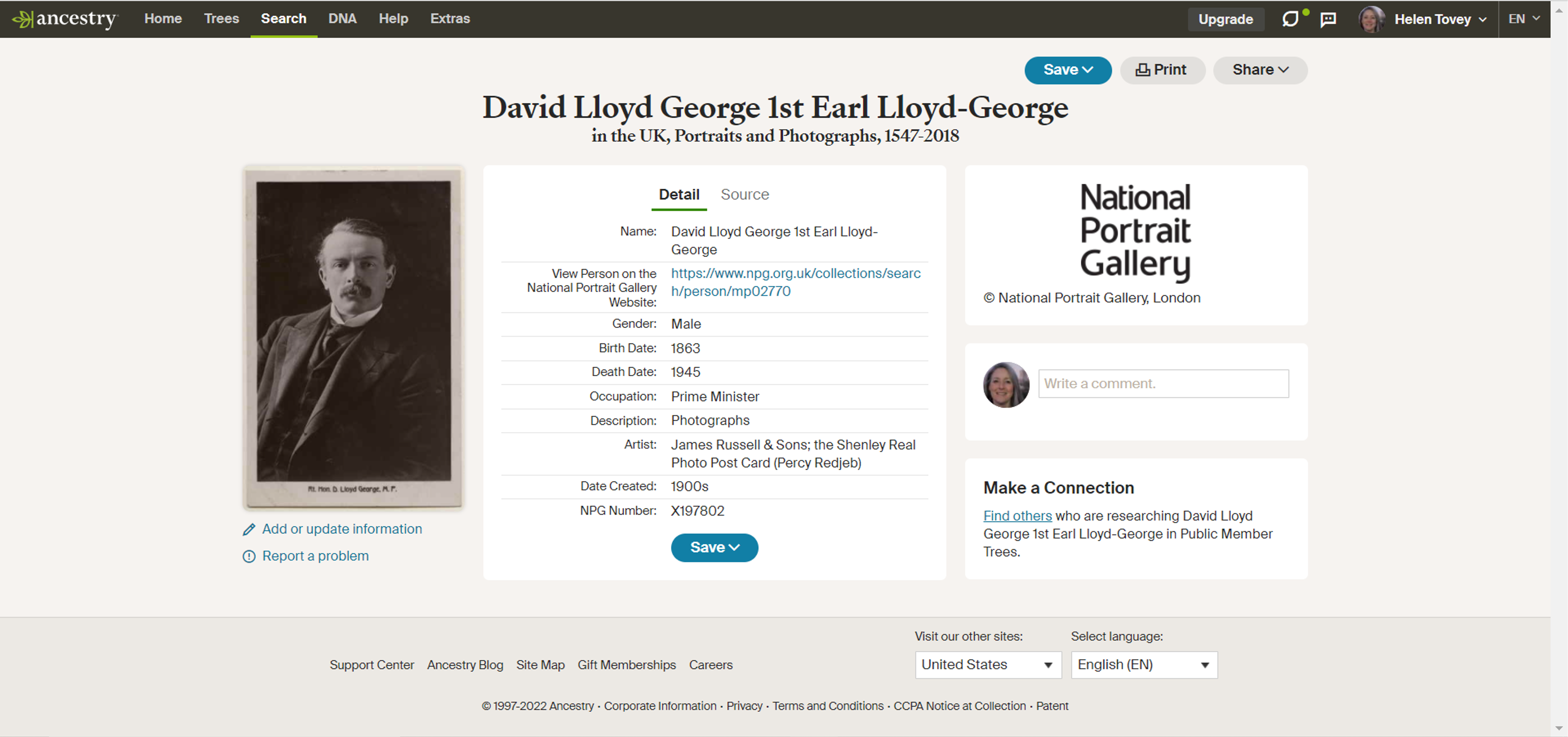21 February 2022
|
Finding visual clues about our ancestors and how they would have once looked adds a thrilling angle to our family histories. Learn how you can discover more with a new portrait collection on Ancestry
Finding images of our ancestors, whether they are photographs, drawings, paintings, prints, or perhaps even a sculpture, enriches our research in so many ways. Seeing an ancestor’s likeness gives us the chance to compare the faces of family members, their clothing meanwhile gives insights to their social standing, demeanour and perhaps occupation too.
What period was the image made?
Fashion in clothing, hairstyles and accessories will all help you date an image. The format of the photograph will help too (it is a daguerreotype, ambrotype, cabinet card, carte de visite, ferrotype or postcard image?). Remember to research any details about the photographer’s studio printed on the mount too – as the years of operation will narrow down the date of your family picture.
What do your family history records tell you?
As family historians you have gathered many details about your family members, so compare the information you’ve gleaned to shed light on the image: for instance, what can the census, passenger lists or birth, marriage or death records tell you about who was alive at a particular time, and which significant events were taking place in their lives.
Weddings, engagements, mourning, breeching (ie small boys getting their first short trousers, after infanthood), emigration, going off to war, significant birthdays and anniversaries, and of course holidays were all reasons why our ancestors may have had their photo taken.
Discover five centuries of images
Photographs are of course just one of the ways in which our ancestors may have been depicted. Ancestry have partnered with the National Portrait Gallery and are proud to make their world-class collection of 125,000 portraits of people from the past, available to family history researchers today. This collection contains portraits in a variety of mediums, including paintings, photographs, sculptures, drawings, and prints. The National Portrait Gallery is unique in that it also captures British history and culture through portraits of everyday people, and not just the nobility or the famous.
To begin your exploration of the five centuries of images (1547-2018) in the NPG collection on Ancestry, please visit Ancestry's website.
Search tip!
While most portraits in the collection are well documented, not all of the portrait sitters are known. If you suspect your family member is the subject of an anonymous portrait, check the date and location of the portrait to see if it matches your ancestor’s history.
Order a print
Once you’ve found a portrait of interest, you can buy a copy at the NPG website.
Images copyright Ancestry/National Portrait Gallery.










